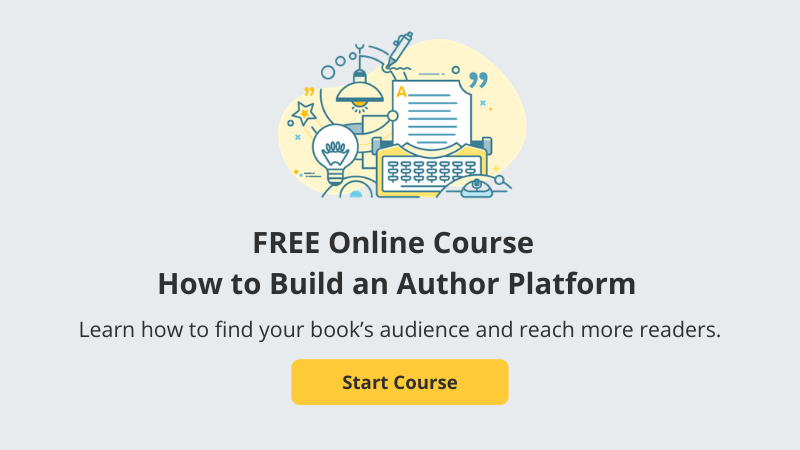Do you think people actually read all the information in your literature, in your press releases, or on your website? Think again. Most people do not read your marketing copy word for word but quickly scan the page looking for information that is helpful and important to them.
People look at your promotional copy with an expectation of some possible benefit for continuing to read. They rarely study your text word-for-word. Instead, they scan the page, looking for words that are pertinent to their needs.
A study¹ found that “79 percent of people scanned any new page they came across and only 16 percent read word-for-word.”
Therefore, you are more likely to communicate with readers if you write copy that is visually scannable and beneficial to the reader. It should quickly communicate a reason why they should purchase your book. In most cases, readers dislike copy that is too promotional, without substance, benefits or validity. People are busy, and they want to quickly get facts that are important to them.
Techniques to Increase the Readership of Your Marketing Copy
- Highlight keywords that are important to the readers. You might use colors, boldface type, italics, or even hypertext links to serve as highlighting techniques.
- Break up copy with functional (rather than “cutesy”) subheads that communicate a benefit to the readers, rather than entertain them.
- Number or bullet your lists to set them apart from the text.
- Your copy should be complete, yet concise and clear.
- Get the readers’ attention quickly, giving them a reason to continue reading. Apply the AIDA formula for writing promotional copy: Attention – Interest – Desire – Action.
- Follow the adage, “Tell me quick, and tell me true, or else, my friend, the heck with you.”
- Less is more. Keep it straightforward and simple (KISS), using short, rather than long text to draw the readers in.
- Use graphics that are professionally produced. Use testimonials and endorsements from well-known people to build your credibility.
How to Write Better Promotional Copy
Below are examples of different ways to write marketing copy. I followed the pattern of Morkes and Nielsen’s wording in the left and center columns but changed the actual words to reflect their intent—making them more relevant to authors and publishers. The study demonstrates how words can pull readership, as compared to straight promotional copy (the control condition). While each technique does well on its own, a combination of them improves the functionality of the copy by 124%.
| Text |
Sample Copy |
Usability Improvement (relative to control condition)² |
| Copy that attempts to “sell” instead of inform | You will sell more books and make more money by selling to non-bookstore markets. In fact, most publishers selling to special markets, whether fiction or non-fiction, have found they can reduce – if not eliminate – returns and distribution discounts, increase their profitability, improve cash flow, make their marketing efforts more effective, and lower their risk of publishing unsaleable books. | 0% (Control Condition) |
| Succinct copy with about half the word count and less “hype” | Selling books to special-sales markets can help publishers in several ways. It is possible to reduce returns and distribution discounts, increase profitability, improve cash flow, market more effectively, and publish saleable books. | 58% |
| Layout that facilitates visual scanning, with copy similar to that of the control condition | You could sell more books and make more money by selling to non-bookstore markets. In fact, most publishers selling to special markets, either fiction or non-fiction, have found they can: • Reduce – if not eliminate – returns; • Reduce distribution discounts; • Increase their profitability; • Improve cash flow; • Make their marketing efforts more effective; • And lower their risk of publishing unsaleable books. |
47% |
| Neutral copy using less promotional language | Possible benefits of selling to special markets include a reduction of returns and distribution discounts, improved profitability and cash flow, more effective marketing, and publishing content that tends to be more saleable. | 27% |
| Copy that is concise, scannable, and objective | When selling books to special markets, you could realize these benefits: • Reduced returns; • Reduced distribution discounts; • Increased profitability; • Improved cash flow; • More effective marketing efforts; • Lower risk of publishing unsaleable books. |
124% |
This data recognizes that people do not want to sift through “hype” to find out if the offer will benefit them in some way. It also demonstrates that marketing copy must be customized for the intended readers, offering them specific benefits. For example, literature directed to the buyer in a retail store might show that your sales history and promotional efforts could increase store traffic, profitability, and inventory turns. However, this copy would be of no interest to librarians looking to provide useful information to their patrons.
Stop selling your books. Instead objectively communicate—with concise, scannable, and objective copy and layout—ways in which the people who buy your books will benefit. In Catch-22 fashion, you may sell more books as a result.
¹ The study (Applying Writing Guidelines to Web Pages) was conducted by John Morkes and Jakob Nielsen.
²Statistics were taken from the study by Morkes and Nielsen.













